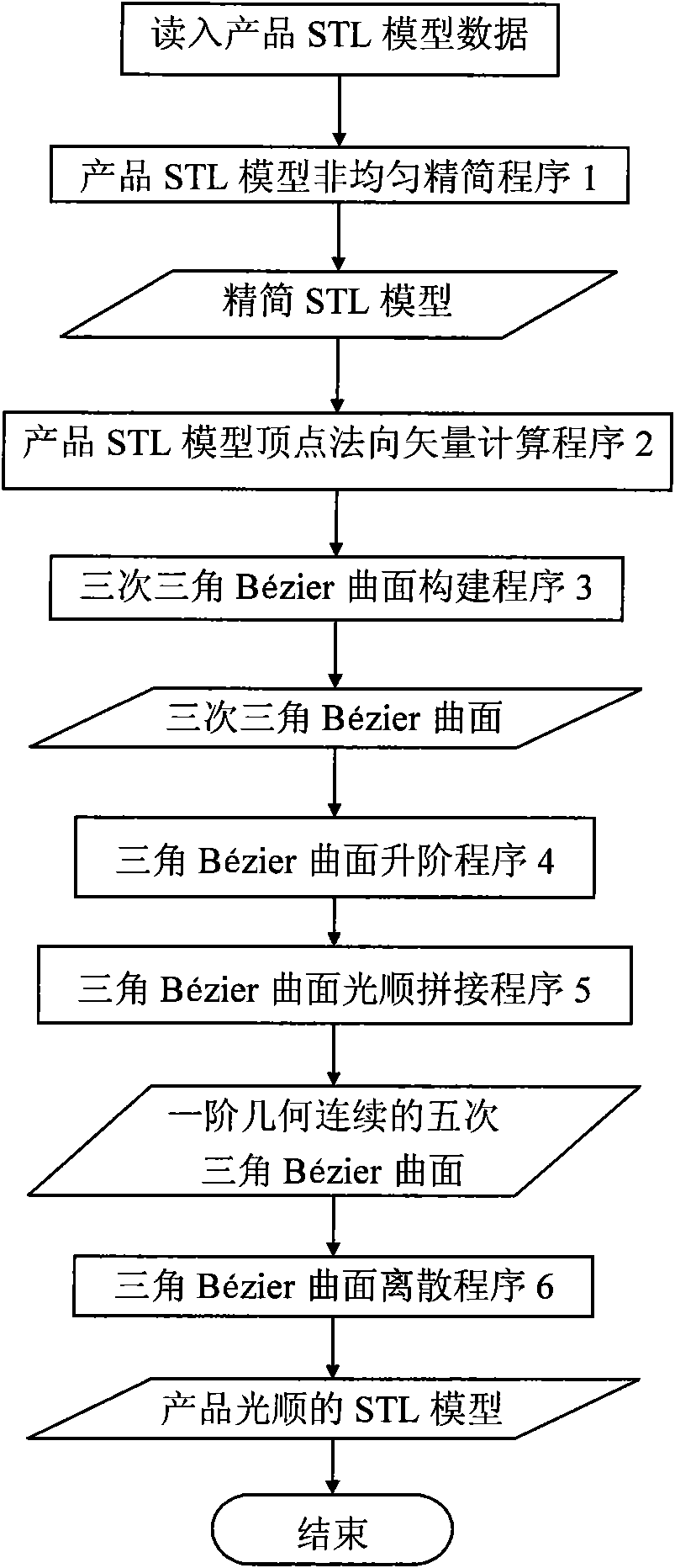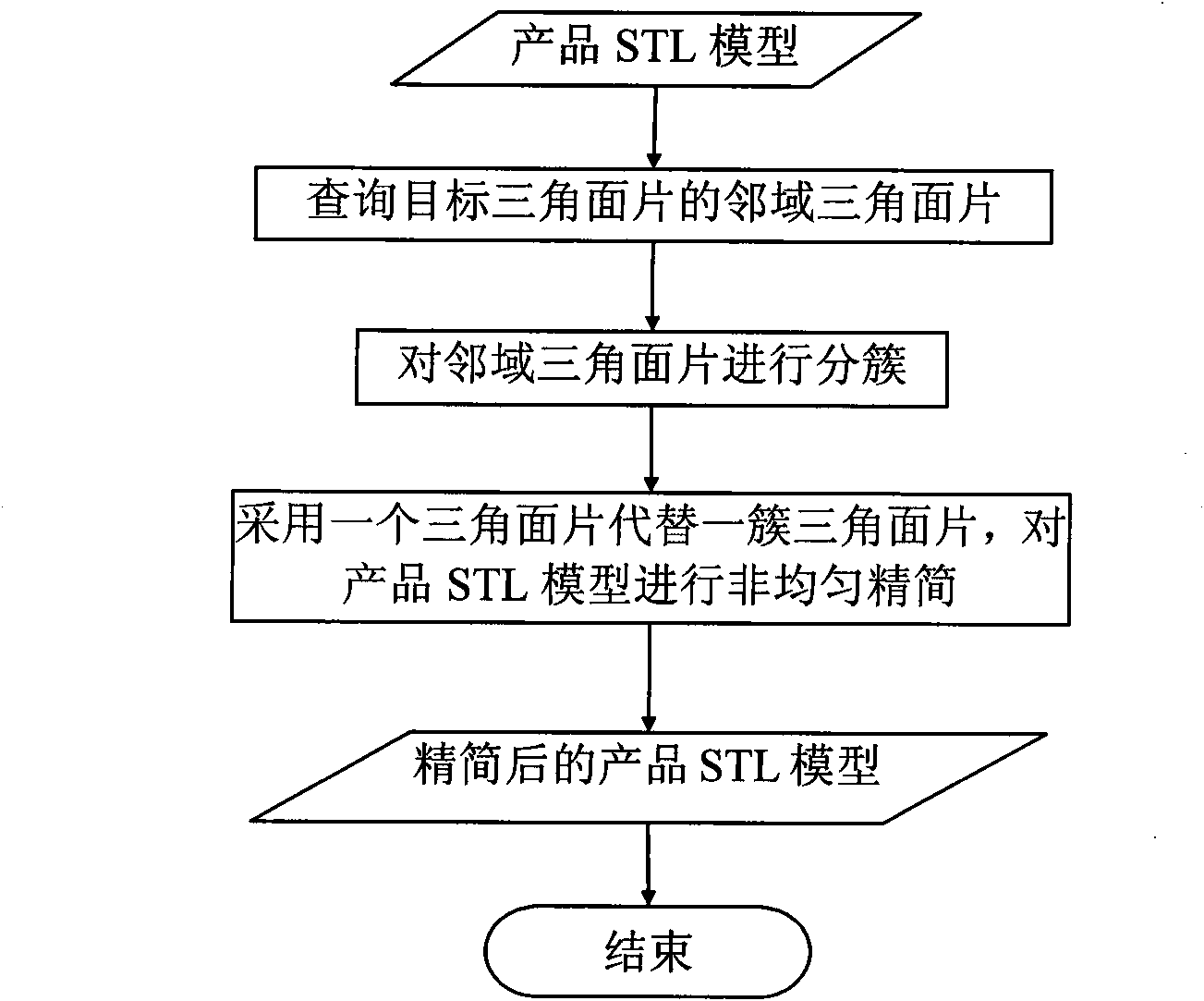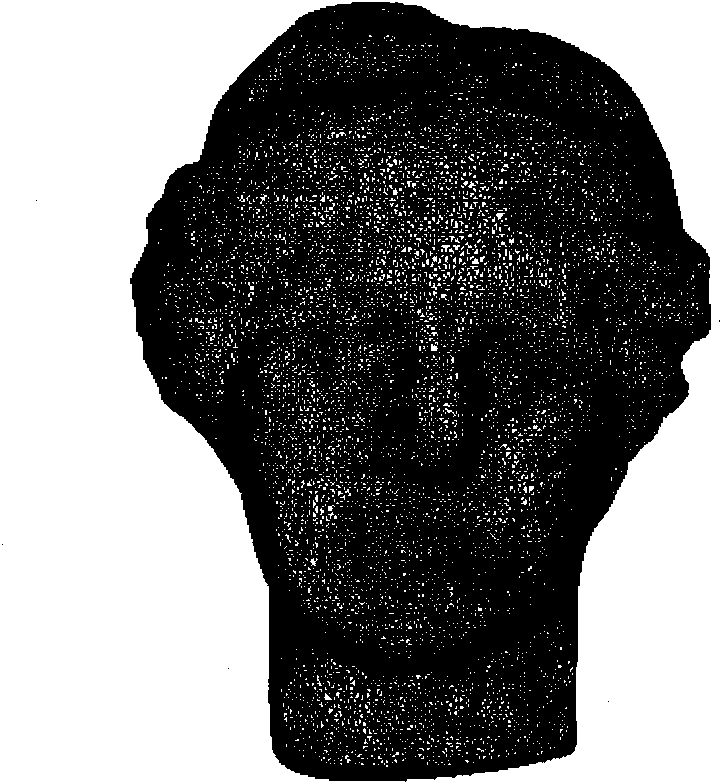Triangle Bezier curved surface-based method for fairing STL model of products
A triangular surface and product technology, applied in the field of product reverse engineering, can solve the problems of model deformation, inaccurate description of product surface characteristics, and low model accuracy
- Summary
- Abstract
- Description
- Claims
- Application Information
AI Technical Summary
Problems solved by technology
Method used
Image
Examples
Embodiment Construction
[0033] The present invention will be further described below in conjunction with accompanying drawing.
[0034] figure 1It is the flow chart of the smoothing program of the product STL model based on the triangular Bézier surface of the present invention. The product STL model smoothing program based on triangular Bézier surface includes: product STL model non-uniform simplification program 1, product STL model vertex normal vector calculation program 2, cubic triangular Bézier surface construction program 3, triangular Bézier surface upgrade program 4, triangle Bézier surface smooth stitching program 5 and triangular Bézier surface discretization program 6. Among them, the product STL model non-uniform simplification program 1 sets the triangular surface normal vector angle threshold σ to cluster the triangular surface, and realizes the non-uniform simplification of the product STL model based on the clustering results. Product STL model normal vector calculation program 2 ...
PUM
 Login to View More
Login to View More Abstract
Description
Claims
Application Information
 Login to View More
Login to View More - R&D
- Intellectual Property
- Life Sciences
- Materials
- Tech Scout
- Unparalleled Data Quality
- Higher Quality Content
- 60% Fewer Hallucinations
Browse by: Latest US Patents, China's latest patents, Technical Efficacy Thesaurus, Application Domain, Technology Topic, Popular Technical Reports.
© 2025 PatSnap. All rights reserved.Legal|Privacy policy|Modern Slavery Act Transparency Statement|Sitemap|About US| Contact US: help@patsnap.com



